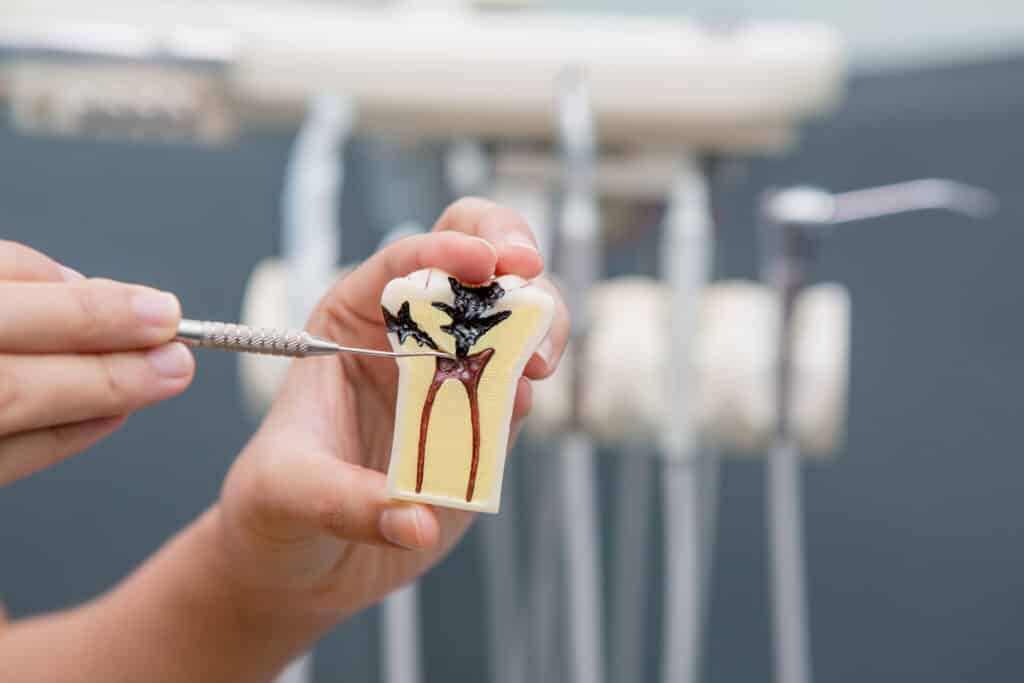
Endodontic Retreatment
There can be many reasons why a tooth fails to heal properly after root canal therapy, including delaying placement of the dental crown or other restoration or salivary contamination. When this occurs, our highly trained endodontists often recommend endodontic retreatment to save your natural tooth. Our endodontists and team proudly use innovative technology and treatment techniques to increase the success rate of your endodontic retreatment.
What is Endodontic Retreatment?
Endodontic retreatment is a dental procedure performed when a tooth that has previously undergone root canal therapy fails to heal properly and/or symptoms continue to persist.

Dr. Justin Kolnick
Endodontist
“Sometimes a root canal treated tooth may not heal as expected. Retreatment is the process of “recleaning” and “resealing” your tooth. It is very important to avoid future complications.”

Reasons for Endodontic Retreatment
As with any dental or medical procedure, it’s possible your tooth won’t heal as expected after initial treatment for a variety of reasons, including:
- Complex Root Canal Anatomy: Some teeth have very complex root canal systems with narrow or curved canals that might not have been completely treated during the initial root canal treatment.
- Delayed Restoration: If the tooth was not properly sealed with a permanent crown or filling after the first treatment, it may become re-infected.
- New Decay: New decay can expose the root canal filling material to bacteria, causing a new infection in the tooth.
- Cracks or Fractures: A crack or fracture in the tooth can also provide a pathway for bacteria to re-enter and infect the previously treated root canals.
What Does Endodontic Retreatment Entail?
The endodontist will reopen your tooth to gain access to the root canal filling material. In many cases, complex restorative materials — crown, post and core material — must be disassembled and removed to permit access to the root canal system.
After removing the previously existing root canal filling material, the endodontist will clean the canals and carefully examine the inside of your tooth using magnification and illumination, searching for any additional canals or unusual anatomy that requires treatment. After cleaning the canals, the endodontist will fill and seal the canals and place a temporary filling in the tooth. If the canals are unusually narrow or blocked, your endodontist may recommend endodontic surgery. This surgery involves making an incision to allow the other end of the root to be sealed.
After your endodontist completes retreatment, you will need to return to your regular dentist as soon as possible to have a new crown or other restoration placed on the tooth to protect and restore it to its full function.

Recovery from Endodontic Retreatment
Initially, your tooth may be tender, particularly if there was pre-existing pain or infection. Following treatment, it’s crucial to avoid vigorous brushing near the treated area and refrain from chewing hard foods or ice with that tooth. If severe pain and/or swelling occurs, contact your endodontist immediately.
Why Choose Leading Edge Endodontics for Your Retreatment?
We specialize in endodontic retreatment, a precise procedure designed to save your natural teeth from previous root canal challenges and reinfections. Our expert team is committed to providing thorough and meticulous care, ensuring effective resolution of any lingering issues. Whether you’re facing persistent discomfort or seeking to preserve your tooth’s health, trust us to deliver personalized treatment focused on restoring your dental wellness with precision.
Find one of our convenient locations
Contact Us
Fields marked with “*” are required.
"*" indicates required fields
